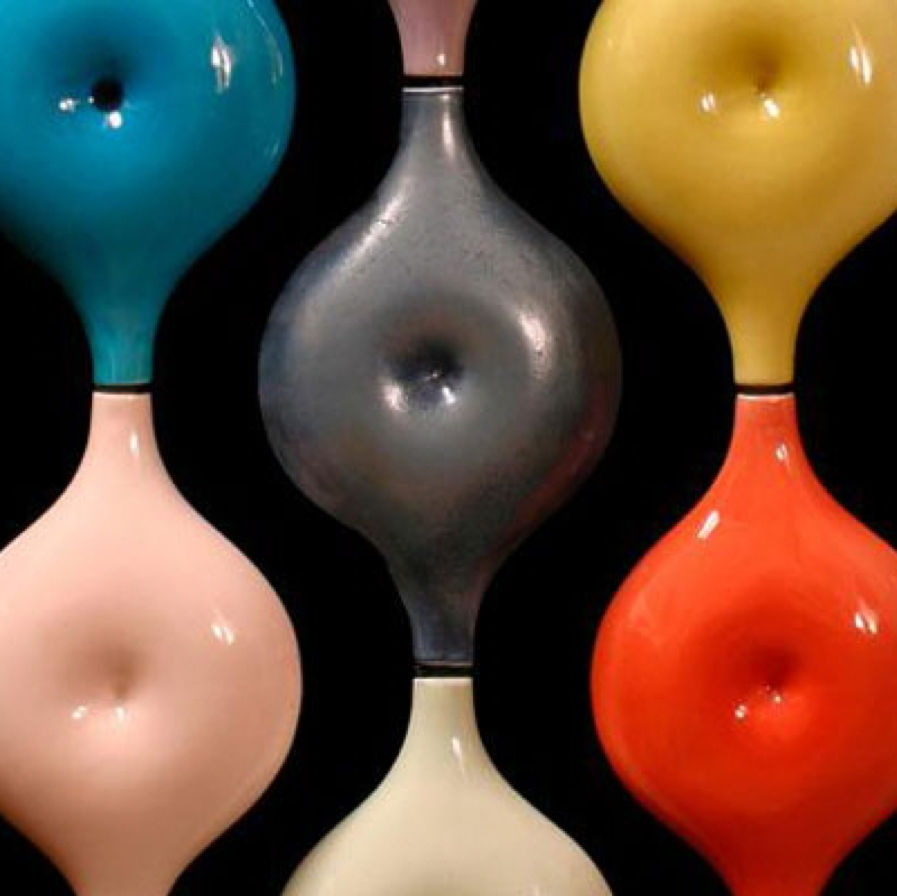Sometimes it’s a good idea to step back and appreciate the greats just because. It’s easy to fall victim to a disease of perspective where you start to lose sight of the forest through the trees and that’s why we’re grateful for a piece we read in Core 77. Earlier this summer, the magazine ran a series in which they profiled women designers. One of the names that came up was Eva Zeisel, a Budapest-born lover of ceramics who operated out of New York.
Above image: Zeisel’s “Belly Button Room Divider” prototype, 1957. Photograph by Brent Brolin, courtesy of Eva Zeisel Archive.
In her piece, Rebecca Veit comes up a handful of facts about the designer, but they’re more than enough to earn your respect. Zeisel was unique in so many ways. In addition to being a powerhouse designer who created “useful objects” up until her death at 105, Zeisel championed curves at a time when they were out of fashion, she was the first female designer ever to be given an exhibition at the Museum of Modern Art, and she was thrown in solitary confinement over an alleged (read: bogus) plot to kill Joseph Stalin.

Designs from an all-white Museum dinner service, 1942-45. Photograph courtesy of the Museum of Modern Art.

This photograph from the Brooklyn Museum includes the Town and Country creamer (1945) and a baby oil pourer shaped like a rabbit (1940).

A tea set for the Lomonosov Porcelain Factory in Russia, 2005. Photograph courtesy of the Cooper Hewitt, Smithsonian Design Museum.
She was also one of the first people who changed public perception about ceramics, so in a way we at CFile owe her our jobs. From Core 77:
In 1939 Zeisel rejected the label of “craft” when she began teaching ceramics as an industrial design class at Pratt Institute. It was the first class of its kind in America; in it, Zeisel emphasized how mass-production techniques could be applied to ceramics and gave her students opportunities to apprentice in the field, helping shift ceramics from the realm of handicraft to design.
Please continue over to Core 77 to read Veit’s piece in full. In the meantime, enjoy these fantastic designs, each with a shape and narrative all their own.
Bill Rodgers is the Managing Editor of cfile.daily.
Do you love or loathe these examples of contemporary ceramics? Let us know in the comments.

Sauce boat and ladle from Zeisel’s Hallcraft/Tomorrow’s Classic line for Hall China, 1949-50. Photograph courtesy of the Museum of Modern Art.

Service designed by Zeisel at the beginning of her career in the Schramberg factory in Germany, 1931






Her work is beautiful and brilliant and I’ve long been an admirer, thanks for the profile…it’s always great to be reminded of the “greats”.